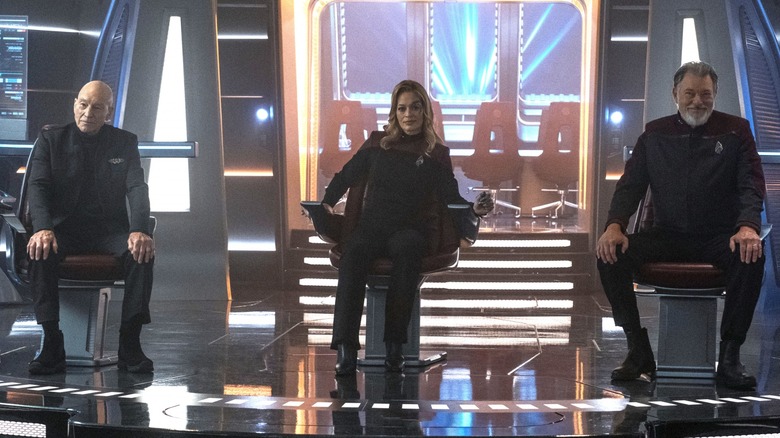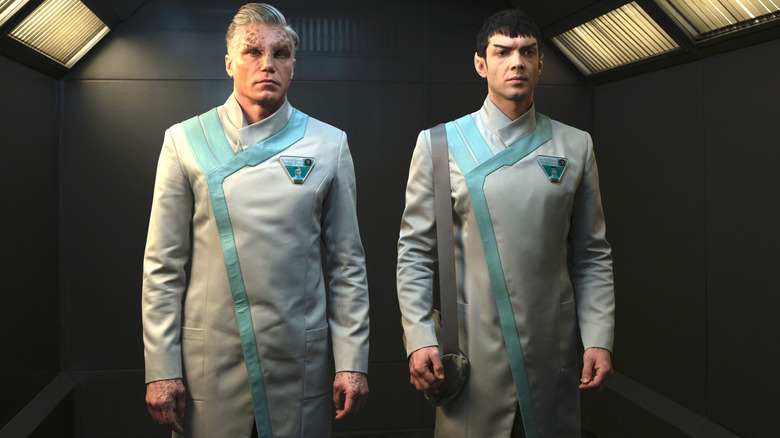Star Trek's Prime Directive Explained
If there is one thing to remember about the rules of "Star Trek," it is the importance of the Prime Directive. As opposed to sci-fi franchises that fight aliens or incite rebellions, Gene Roddenberry's brainchild is in a unique position in that the United Federation of Planets has reached a near-utopia. Starfleet's main concern is exploration — seeking out societies that have achieved warp technology to make first contact. On the other hand, planets that have not achieved this technology are deemed unready to know about the Federation and alien life.
As such, Starfleet is forbidden to interfere in the development of pre-warp civilizations, with captains even staking their lives on it. But with ships like the USS Enterprise constantly traveling through the stars, the opportunity to do so naturally comes up a time or two, and non-interference is easier said than done, especially when sitting by and doing nothing would lead to the extinction of an entire species. Consequently, Starfleet seems to violate the Prime Directive more often than not.
Violating the Prime Directive is often justified
As much as the characters of "Star Trek" insist on adhering to the Prime Directive, they very rarely take their own advice. For whatever reason, it always seems to be more of a hindrance than anything else — most of the time that the Enterprise goes on a journey to help another civilization, the Prime Directive gets in the way. For instance, while attempting to stop a volcano from wiping out a primitive species — and Spock (Zachary Quinto) — in "Star Trek Into Darkness," Kirk (Chris Pine) is the first to forgo it, leading to his temporary demotion. And while Kirk is always the first to bend the rules, he isn't the only one. Even Captain Pike (Anson Mount), who tries to live his life to the letter of Starfleet, finds himself in situations where skirting around the Prime Directive is the only way.
In the series premiere of "Star Trek: Strange New Worlds," it is revealed that the Federation had accidentally made its existence known to the planet Kiley 279 during the Battle near Xahea. Having observed the 100+ warp signatures through a telescope, the Kiley were able to reverse-engineer the technology to create a warp bomb. So with Starfleet having effectively already interfered in the planet's development, Pike and his crew reveal themselves to convince the Kiley to use the technology for exploration rather than self-destruction. Despite their good intentions and ultimate success, however, it is only thanks to a loophole that everyone involved is not court-martialed.

